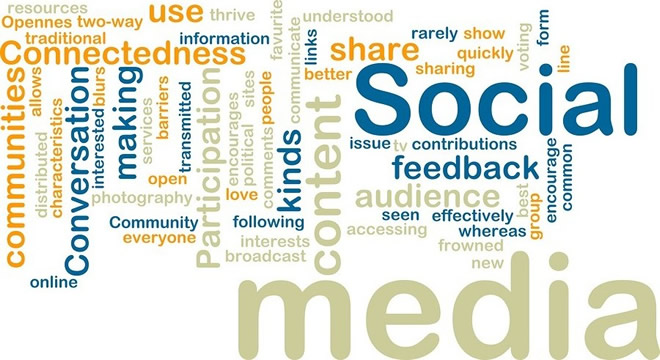Are You a Felonious Content Thief?
We’re not ones to say,”I told you so” but we did talk about content theft in November of 2013 and apparently, according to an article that just appeared, 85% of web content images are illegal and those who stole them are responsible for a felony amount of money that will destroy their life. We won’t do a “happy dance” at that fact as we may be vindicated by the news but it’s nothing to celebrate.
While posting content to the web, there are several legal issues you need to know not only to not break copyright laws but also to protect your own copyrighted material and the integrity of your content. The number mentioned in an article published yesterday, Report: Over 85% of Images Used Online Are Without Permission, which was oddly “borrowed” by DesignTaxi.com, from a IMGembed whitepaper, Ethical Use of Images Online: A Valuable Ecosystem, which we now use as content for this article. It says in its introduction:
Images are the most powerful means to convey a concept, and as such they’re critical in communication within online publishing. Image use has exploded the past few years, and publishers have as many options for acquiring compelling imagery as do photographers for promoting theirs. Despite this proliferation of content and use, however, the noise to signal ratio on how to acquire images remains…noisy.
IMGembed outlines a compelling new way for online publishers and image owners to engage, cut through the noise, and share in the attribution, monetization and tracking of publishing images online. In this report, we outline the asymmetry in the current image marketplace, and define how and where value can be exchanged throughout the process.
Not wanting to have a trail of borrowing lead to us, we’ll continue quoting from the thieves at Design Taxi and just “shank” them in the shower if we are both sent to prison. Seriously, the problem of content theft has become a dangerous and costly problem for content owners. IMGembed, offers a solution by acting as an agent, of sort, to distribute, track and sell rights to content, mostly images. It’s not a scam, however. As with stock image sources, it is a bridge between those who desire legal content they don’t want to steal and content owners who have monetized what is legally theirs to use and sell.
RELATED: The Basics of Starting a Blog
Only a Lawyer Might Understand the Problem
According to the Design Taxi article, which may be their own words, or taken off the whitepaper… it gets confusing, which is why it’s a growing problem:
With the rise of social media platforms and smartphone photography, the volume of imagery available online has grown to a staggering size — on Facebook alone, 350 million photographs are uploaded each day.
Due to the ready access to a massive pool of content on the internet, online theft of imagery is rampant — an overwhelming 85% of online image use is done without permission, of which many are shared without attribution to the rightful source.
These infographics, which appear on the Design Taxi article, taken from the IMGembed whitepaper and fully credited to IMGembed, although now used as content for an article that is riddled with ads that bring monetization into Design Taxi and not IMGembed, which we will also credit to IMGembed, but we have no ads and this is done as a service to web readers who are interested in content theft and the subtle differences between referring to another source by using their content with proper attribution and outright theft. Did that make sense to you? Of course not! The figures of illegally reproduced content are high but could easily be cut down when people understand the letter of the law.
Here are the images used in the often referred to infographics, which are ©IMGembed and belong to them, even though we are giving them proper attribution and using them here, where we will make no income from using them:
Infographics ©IMGembed
Do We Sound Foolish?
Most people will laugh at the snarkiness used to quantify our use of the copyrighted material, and that’s the problem with content theft — people truly believe they have done nothing wrong. Ignorance of the law, however, is no excuse and the financial penalties will ruin most businesses or individual, well-meaning bloggers. The illegal use of content was always a problem with the internet.
The simple answer to using images found on the internet is; if you don’t own it, meaning YOU took the photo or paid for a photographer to shoot it, drew the illustration, designed the image or hired and contractually bought certain rights from the creators or made a legitimate purchase from a stock image site, you can’t legally use it! If you do, you’re a thief and guilty.
RELATED: A Worthy CMS Battle: Joomla vs. WordPress
Encouraging Non-Permission Usage
Still, content creators don’t make it easy to understand usage for the common person. Creating viral videos, memes, ecards and humorous images for the purpose of being shared via a simple click of a share button does constitute permission for these to be used on your Facebook page, Twitter account, blog and/or personal use… to a point. Some lawyers will argue that once you start making income off one of these shared content pieces, you are in breach of the copyright law.
Will IMGembed sue us or send a cease and desist order to have their copyrighted content removed from this article or the one on Design Taxi? Doubtful. They are benefitting from the links to their service and the viral nature of these links are important to them spreading the word about their business. Sometimes a business will look the other way when the content usage increases their business. If it detracts from their business or another site makes income, then they will not be pleased.
What is Copyrighted Content?
Aside from images, it”s videos and written content as well. The easy and inexpensive answer to acquiring the content you need is to purchase it with the proper rights. There are stock image sources (many of which also have stock video as well) and written content (or you can hire a writer through services that specialize in representing writers (or hire a freelancer).
Admit it… we all have and usually on multiple occasions, plucked an image off the internet. There’s no name attached for the owner, so we feel we have made the best effort to stay within the law. That’s not acceptable under the copyright law.
The minute you use an image you know to be illegally used, you are an accessory to a copyright theft. Financial penalties can be devastating and if the client or your boss decides to throw you under the bus for using an image he/she handed you with orders to use it, then you will really be stuck. It’s not only monetary damages, which may include punitive damages — you may also be ordered to pay the plaintiff’s legal costs, aside from your own. Know the law so you can help clients and bosses understand.
RELATED: A Crash Course in Color Theory for Non-Creatives
Copyright infringement can include a violation of the rights of the creator or rights holder. Examples of imagery infringement may include:
- Use of whole or part of an image without permission
- Use beyond the scope of a license or permission
- Adapting an image without permission
- Asking another photographer or illustrator to identically recreate the image
If an infringement is discovered, responsible parties may include:
- The party that infringed (the photographer or the person that stole the image in the first place), even if unintentionally
- Employees or others who participated in the original infringement
- Anyone who published the infringing image, whether they had knowledge or not
- Anyone who authorized or encouraged infringement
Make Sure of the Rights for Usage
By the same token, when using stock images, you need to be aware of the rights you are purchasing. Kelly Jay, The owner/partner of GL Stock Images (we use their service and have purchased hundreds of legal images), imparts the difference in rights sold by stock sources:
Rights Managed Images
When you purchase a rights-managed image, you are essentially “renting” the image for a one-time use in your project. The image price is determined on several factors: placement, size, quantity, demographics/traffic, industry type, distribution, duration and resolution. Depending on your project scope, the pricing can be dramatic. For example, an image purchased for the cover of Time Magazine may cost thousands of dollars whereas the same image purchased for a small website or blog may cost under a hundred dollars.
Royalty Free Images** **
A less expensive alternative is to purchase royalty free images. Royalty free means you do not have to pay royalties only a one-time fee to use the image. This means you can use the image for multiple aspects of your project, such as print and web. Pricing is based on image size/resolution: small, medium or large. The smaller the size means the smaller the price.
For more information on the use and legalities of stock images, see more at stockphotorights.com.
Top image ©GL Stock Images




